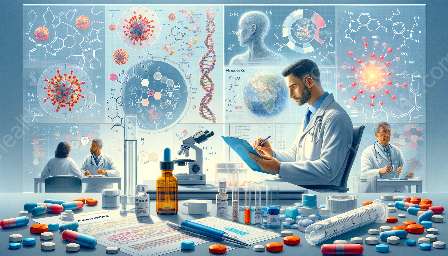Welcome to the captivating world of bioanalytical methods and their profound significance in the realms of pharmacokinetics and pharmacy. In the following comprehensive guide, we will delve deep into the intricate methods utilized to analyze biological samples, exploring the fascinating interplay between bioanalytical methods, pharmacokinetics, and pharmacy.
The Importance of Bioanalytical Methods
Bioanalytical methods serve as the cornerstone of modern pharmacokinetics and pharmacy, enabling the precise analysis of drug compounds and their interactions within biological systems. These methods play a pivotal role in understanding the absorption, distribution, metabolism, and excretion (ADME) of pharmaceutical compounds, thus providing crucial insights for drug development, dosage regimens, and therapeutic monitoring.
Applications of Bioanalytical Methods in Pharmacokinetics
In the field of pharmacokinetics, bioanalytical methods are indispensable for elucidating the behavior of drugs within the body. Through techniques such as liquid chromatography-mass spectrometry (LC-MS), gas chromatography-mass spectrometry (GC-MS), and enzyme-linked immunosorbent assay (ELISA), pharmacokinetic parameters such as drug concentration-time profiles, bioavailability, and clearance rates can be accurately determined. These insights are instrumental in optimizing drug dosing regimens, evaluating drug interactions, and assessing the therapeutic efficacy and safety of pharmaceutical agents.
Integration with Pharmacy Practices
Within the realm of pharmacy, bioanalytical methods play a crucial role in ensuring the quality and efficacy of pharmaceutical products. By employing techniques such as high-performance liquid chromatography (HPLC), electrophoresis, and spectroscopy, pharmacists can verify the composition, purity, and stability of drug formulations, thereby upholding stringent quality control standards. Moreover, bioanalytical methods facilitate the quantification of drug concentrations in biological samples, enabling pharmacists to tailor personalized treatment regimens and monitor patient responses to medication.
Advanced Bioanalytical Technologies
The field of bioanalysis continues to evolve with the advent of advanced technologies such as mass spectrometry imaging, microfluidic systems, and biosensors, revolutionizing the precision and sensitivity of analytical measurements. These cutting-edge methodologies empower researchers and practitioners to explore the complexities of drug metabolism, pharmacokinetics, and pharmacodynamics with unprecedented depth and accuracy.
Emerging Trends and Innovations
As bioanalytical sciences progress, novel trends and innovations are reshaping the landscape of drug analysis and pharmacokinetic studies. From the integration of artificial intelligence and machine learning algorithms for data analysis to the development of miniaturized analytical platforms for point-of-care testing, the field of bioanalytical methods is at the forefront of driving paradigm shifts in pharmaceutical research, clinical diagnostics, and personalized medicine.
Conclusion
In conclusion, bioanalytical methods stand as a bedrock of scientific inquiry and practical application, bridging the realms of pharmacokinetics and pharmacy with their indispensable tools for analyzing biological samples and pharmaceutical compounds. The ever-expanding arsenal of bioanalytical methodologies continues to catalyze breakthroughs in drug development, therapeutic optimization, and patient care, shaping a future where precision and innovation converge to redefine the frontiers of healthcare.


